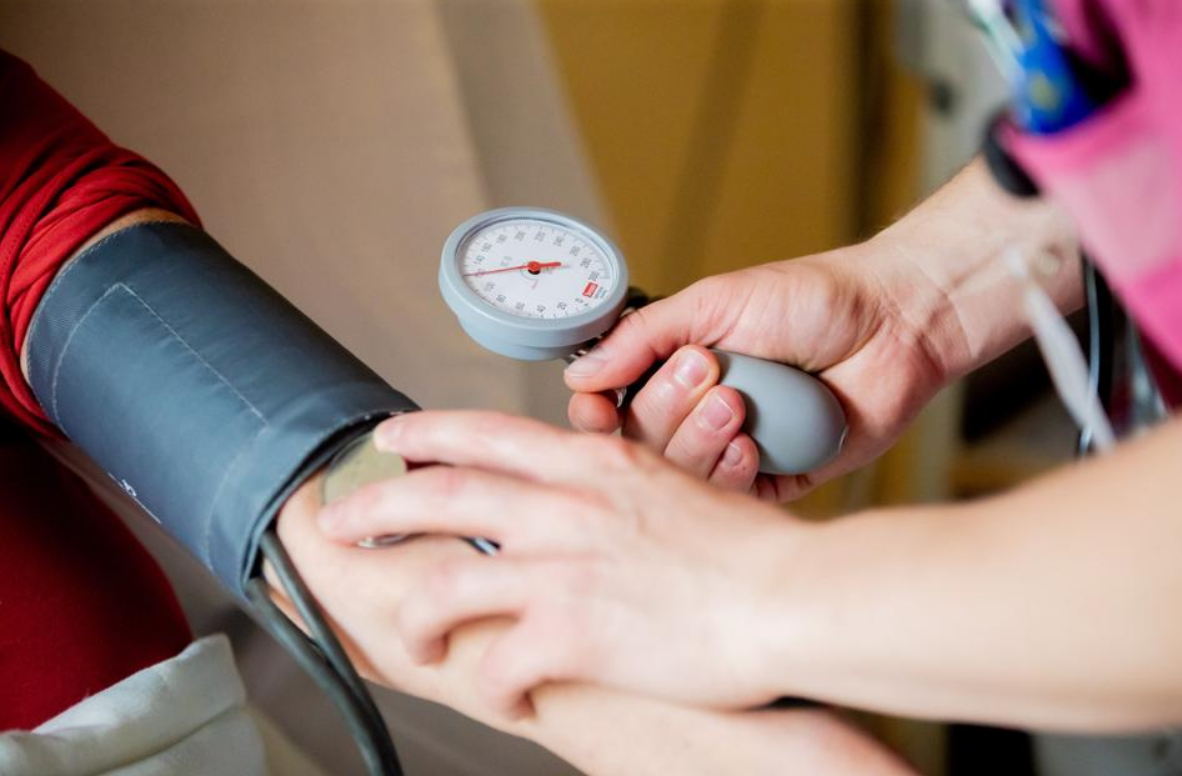DPA/PICTURE ALLIANCE VIA GETTY IMAGES
Do you have an idea of what is in these blood pressure medications? Take away the “I” from an idea and you’ve got a NDEA. That’s the chemical that seems to have contaminated certain lots of irbesartan, a type of blood pressure medication. NDEA is short for N – nitrosodiethylamine.
PubChem describes NDEA as a “synthetic light-sensitive, volatile, clear yellow oil that is soluble in water, lipids, and other organic solvents,” which is “used as gasoline and lubricant additive, antioxidant, and stabilizer for industry materials.”
The description also mentions NDEA as emitting “toxic fumes” when heated to a high enough temperature and being used in the lab to cause liver tumors for experiments. Then, there is this sentence: “it is considered to be reasonably anticipated to be a human carcinogen….Continue reading….
By: Bruce Y. Lee
Source: Blood Pressure Medication Recall: What Is In This That May Cause Cancer?
.
Critics:
A large fall in blood pressure upon standing (persistent systolic/diastolic blood pressure decrease of >20/10 mm Hg) is termed orthostatic hypotension (postural hypotension) and represents a failure of the body to compensate for the effect of gravity on the circulation. Standing results in an increased hydrostatic pressure in the blood vessels of the lower limbs.
The consequent distension of the veins below the diaphragm (venous pooling) causes ~500 ml of blood to be relocated from the chest and upper body. This results in a rapid decrease in central blood volume and a reduction of ventricular preload which in turn reduces stroke volume, and mean arterial pressure.
Normally this is compensated for by multiple mechanisms, including activation of the autonomic nervous system which increases heart rate, myocardial contractility and systemic arterial vasoconstriction to preserve blood pressure and elicits venous vasoconstriction to decrease venous compliance.
Decreased venous compliance also results from an intrinsic myogenic increase in venous smooth muscle tone in response to the elevated pressure in the veins of the lower body. Other compensatory mechanisms include the veno-arteriolar axon reflex, the ‘skeletal muscle pump‘ and ‘respiratory pump‘. Together these mechanisms normally stabilize blood pressure within a minute or less.
If these compensatory mechanisms fail and arterial pressure and blood flow decrease beyond a certain point, the perfusion of the brain becomes critically compromised (i.e., the blood supply is not sufficient), causing lightheadedness, dizziness, weakness or fainting.
Usually this failure of compensation is due to disease, or drugs that affect the sympathetic nervous system. A similar effect is observed following the experience of excessive gravitational forces (G-loading), such as routinely experienced by aerobatic or combat pilots ‘pulling Gs‘ where the extreme hydrostatic pressures exceed the ability of the body’s compensatory mechanisms.
Some fluctuation or variation in blood pressure is normal. Variations in pressure that are significantly greater than the norm are associated with increased risk of cardiovascular disease brain small vessel disease, and dementia independent of the average blood pressure level.
Recent evidence from clinical trials has also linked variation in blood pressure to mortality, stroke, heart failure, and cardiac changes that may give rise to heart failure. These data have prompted discussion of whether excessive variation in blood pressure should be treated, even among normotensive older adults.
Older individuals and those who had received blood pressure medications are more likely to exhibit larger fluctuations in pressure, and there is some evidence that different antihypertensive agents have different effects on blood pressure variability; whether these differences translate to benefits in outcome is uncertain.
Arterial pressure is most commonly measured via a sphygmomanometer, which uses the height of a column of mercury, or an aneroid gauge, to reflect the blood pressure by auscultation. The most common automated blood pressure measurement technique is based on the oscillometric method. Fully automated oscillometric measurement has been available since 1981. This principle has recently been used to measure blood pressure with a smartphone.
Measuring pressure invasively, by penetrating the arterial wall to take the measurement, is much less common and usually restricted to a hospital setting. Novel methods to measure blood pressure without penetrating the arterial wall, and without applying any pressure on patient’s body are currently being explored.
So-called cuffless measurements, these methods open the door to more comfortable and acceptable blood pressure monitors. An example is a cuffless blood pressure monitor at the wrist that uses only optical sensors. One common problem in office blood pressure measurement in the United States is terminal digit preference.
According to one study, approximately 40% of recorded measurements ended with the digit zero, whereas “without bias, 10%–20% of measurements are expected to end in zero” Therefore, addressing digit preference is a key issue for improving blood pressure measurement accuracy. Blood pressure levels in non-human mammals may vary depending on the species.
Heart rate differs markedly, largely depending on the size of the animal (larger animals have slower heart rates). The giraffe has a distinctly high arterial pressure of about 190 mm Hg, enabling blood perfusion through the 2 metres (6 ft 7 in)-long neck to the head. In other species subjected to orthostatic blood pressure, such as arboreal snakes, blood pressure is higher than in non-arboreal snakes.
A heart near to the head (short heart-to-head distance) and a long tail with tight integument favor blood perfusion to the head. As in humans, blood pressure in animals differs by age, sex, time of day, and environmental circumstances: measurements made in laboratories or under anesthesia may not be representative of values under free-living conditions. Rats, mice, dogs and rabbits have been used extensively to study the regulation of blood pressure.
Smart Ring Measures Blood Pressure





Leave a Reply